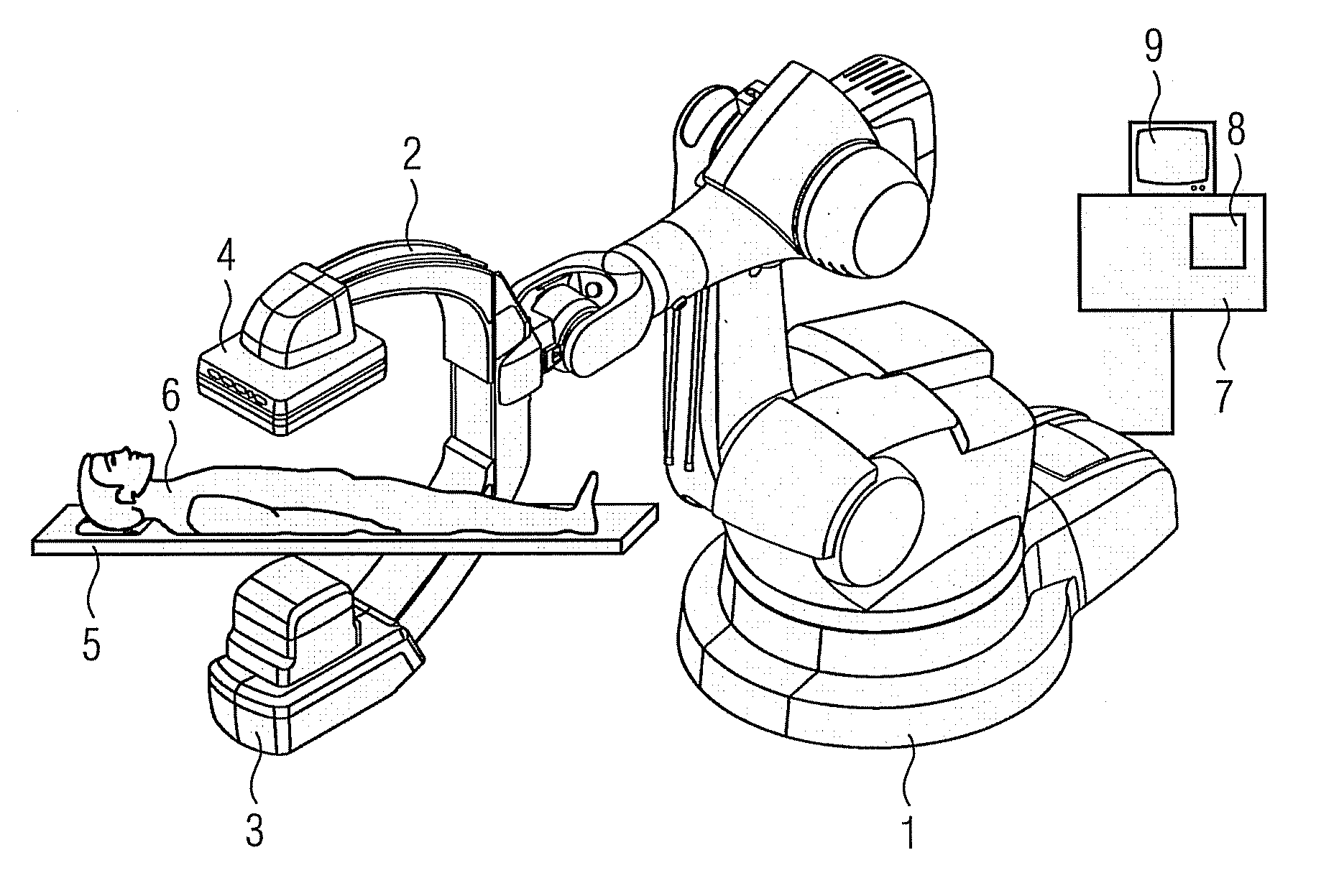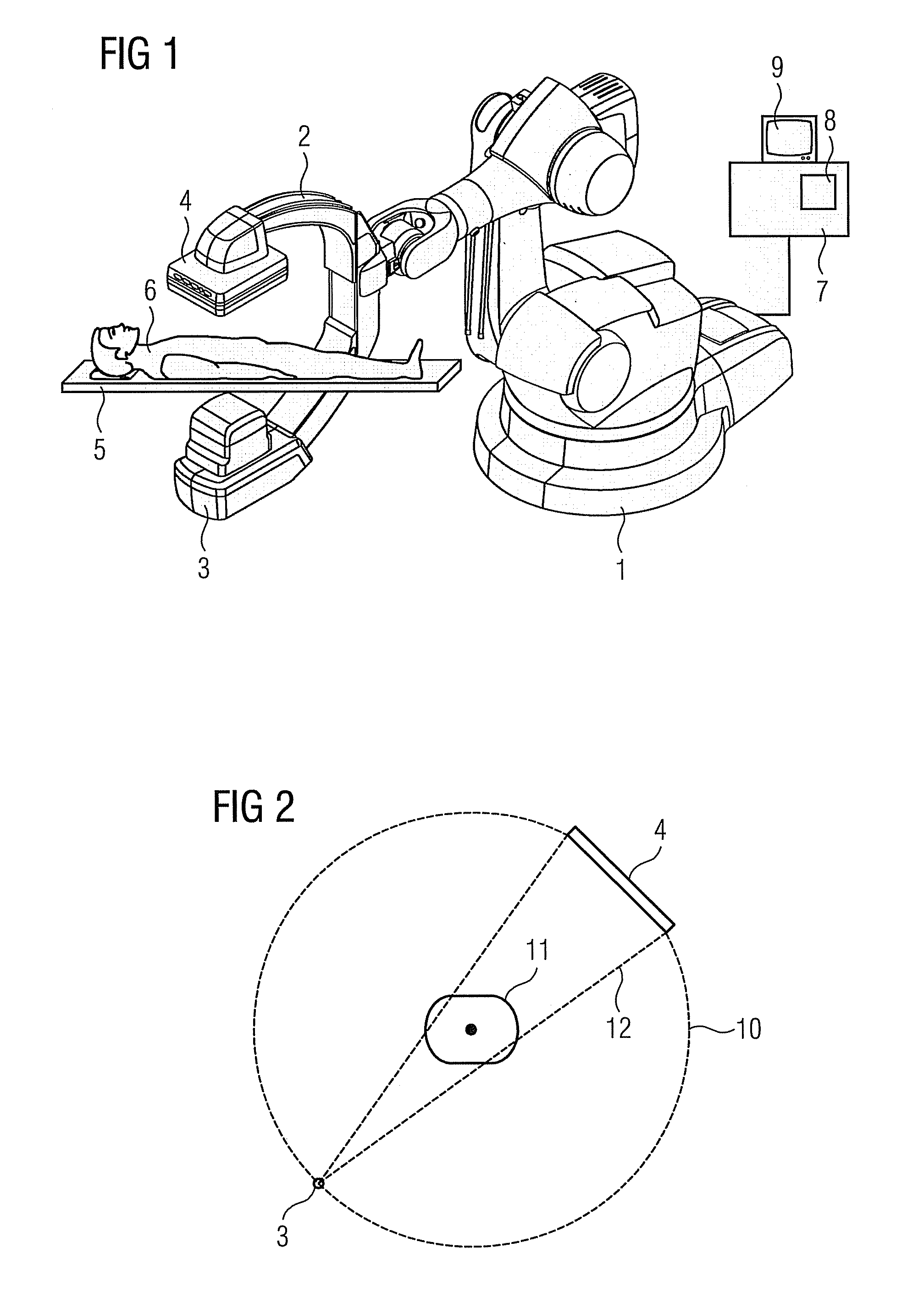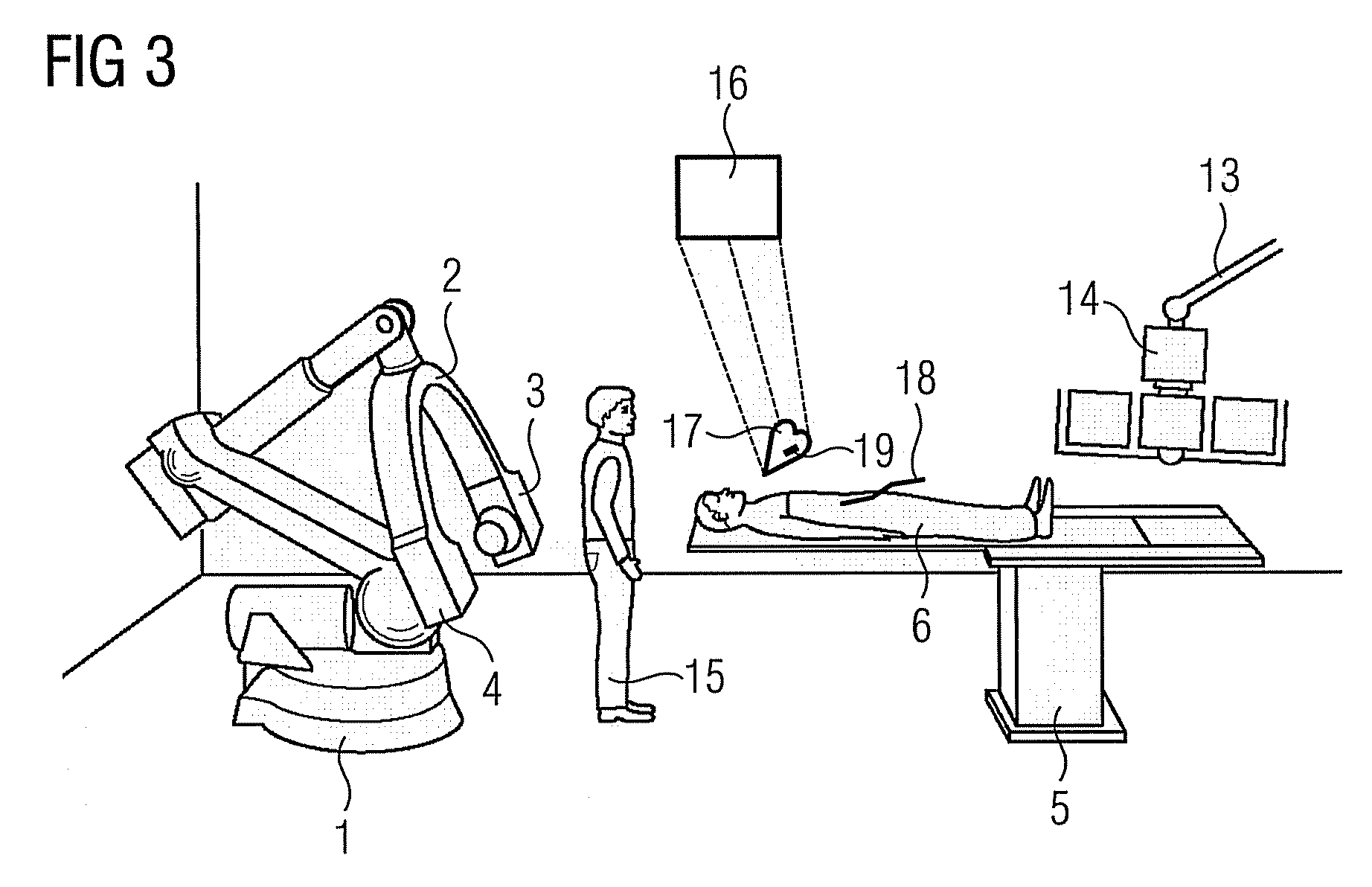Method for representing interventional instruments in a 3D data set of an anatomy to be examined as well as a reproduction system for performing the method
a technology of interventional instruments and 3d data, which is applied in the direction of instruments, diagnostic recording/measuring, radiation beam directing means, etc., can solve the problems of total occlusion, coronary arteries, and blockage of blood flow, so as to achieve faster and safer minimally invasive therapy
- Summary
- Abstract
- Description
- Claims
- Application Information
AI Technical Summary
Benefits of technology
Problems solved by technology
Method used
Image
Examples
Embodiment Construction
[0046]FIG. 1 shows an x-ray diagnostic device which has a C-arm able to be rotated on a stand in the form of an industrial robot 1, with an x-ray radiation source, for example an x-ray emitter 3, and an x-ray image detector 4 being attached to the ends of said C-arm.
[0047]The x-ray image detector 4 can be a rectangular or square, flat semiconductor detector which is preferably made of amorphous silicon (a-Si).
[0048]Located on a patient bed in the beam path of the x-ray emitter 3 is a patient to be examined so that an image of their heart can be recorded for example. Connected to the x-ray diagnostic device is a system control unit 7 with an image system 8, which receives and processes the image signals of the x-ray detector 4. The x-ray images can then be observed on a monitor 9.
[0049]By means of the industrial robot 1 known from DE 10 2005 012 700 A1 for example, which preferably has six axes of rotation and thus six degrees of freedom, the C-arm 2 can be repositioned as required, ...
PUM
| Property | Measurement | Unit |
|---|---|---|
| degrees of freedom | aaaaa | aaaaa |
| color | aaaaa | aaaaa |
| Magnetic Resonance Imaging | aaaaa | aaaaa |
Abstract
Description
Claims
Application Information
 Login to View More
Login to View More - R&D
- Intellectual Property
- Life Sciences
- Materials
- Tech Scout
- Unparalleled Data Quality
- Higher Quality Content
- 60% Fewer Hallucinations
Browse by: Latest US Patents, China's latest patents, Technical Efficacy Thesaurus, Application Domain, Technology Topic, Popular Technical Reports.
© 2025 PatSnap. All rights reserved.Legal|Privacy policy|Modern Slavery Act Transparency Statement|Sitemap|About US| Contact US: help@patsnap.com



